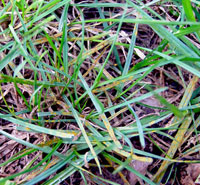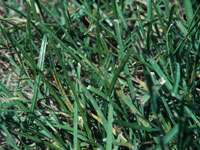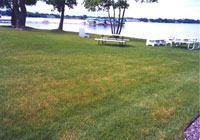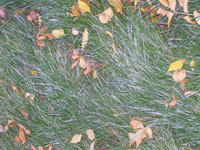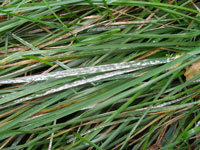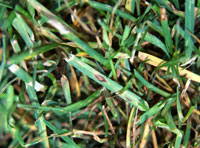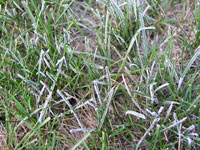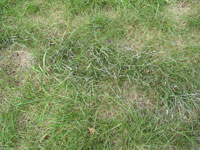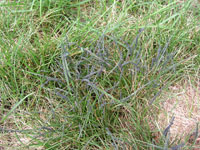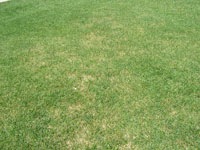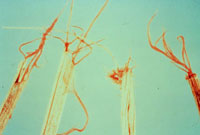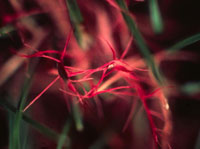Extension > Garden > Diagnose a problem > What's wrong with my plant? > Turf > Discolored leaf blades
Turf > Discolored leaf blades
1 of 6
Rust
Puccinia sp. or Uromyces sp.
- Infected lawn area looks thin and tinted orange or brown
- Powdery orange dust like spores can be seen on light colored shoes after walking through an infected lawn
- Raised orange or yellow spots or bumps on the grass blade
- Powdery orange or yellow dust-like spores easily rub off leaf spots and can be seen on a white tissue
- More information on rust in turfgrass
2 of 6
Powdery Mildew
Blumeria graminis
- Infected grass is powdered white to gray, as if flour had been spilled
- Grass blades have fluffy to powdery white spots
- Common in grass grown in shady areas
- More information on Powdery Mildew
3 of 6
Leaf Spot and Melting Out
Dreschlera sp. and Bipolaris sp.
- Infected grass looks thin and weak
- Irregular small patches of dead grass throughout the infected area
- Spots on leaves, stems and rhizomes
- Spots vary in size and color and may be reddish-brown, purplish-black, black and may or may not have a light colored center
4 of 6
Slime Mold
Many different myxomycetes
- Many round pin head sized balls (fungal structures) cover the surface of the grass leaf blade
- Round fungal structure may be black, white, yellow, purple, orange or many other colors
- Colorful round fungal structures disappear in 1 to 2 weeks
- Typically grass in only one small area of the lawn is affected
- Commonly seen after periods of rain or high humidity
- More information on Slime Mold
5 of 6
Dollar Spot
Sclerotinia homeocarpa
- Randomly scattered tan to gray round dead patches, 2 to 6 inches wide
- Cobweb like fungal growth on infected grass blades during cool wet periods like early morning
- Leaf blades have dry, tan sections with a rusty-brown border, early leaf infections may be a dry, tan oval with a rusty brown border
- Many small patches may grow together to create larger areas of thin, tan grass
6 of 6
Red Thread
Laetisaria fuciformis
- Irregular to round patches of tan grass 2 to 24 inches wide
- Grass blades die and turn tan from the tip down and are often mixed with healthy grass blades
- In humid weather, clumps of pink cotton candy-like fungal growth can be seen on infected patches of grass
- Hard pink to red thread shaped fungal structures emerge from the tip of infected grass blades
- Common in cool, wet weather and N-deficient grass



